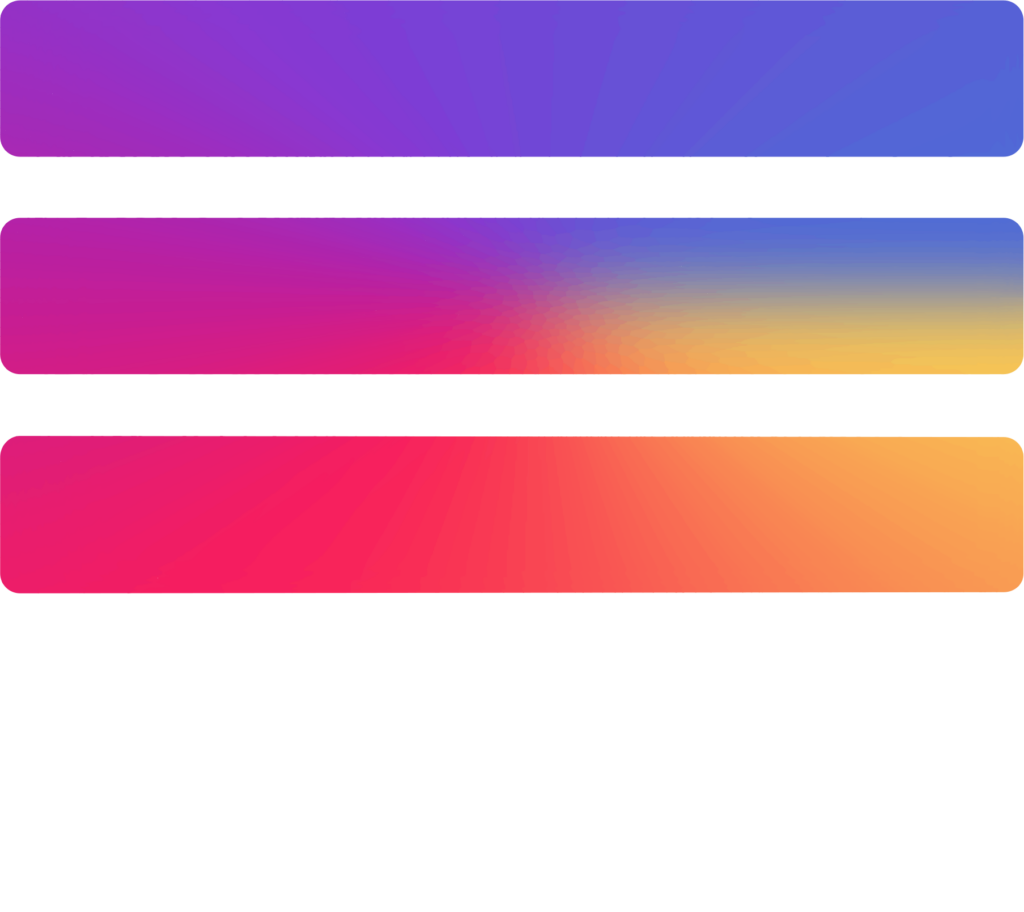Thank you for checking out this ASO guide made just for you! If you’re reading this, it means you’re either a budding game developer, perhaps an app publisher looking into how to better grow your customer base and make your game app stand out among the rest. After all, the gaming market is heavily saturated with over 3,000+ apps being added to the Play Store every day just this year alone! It’s pretty daunting to think about, how could you possibly compete with so many options out there?
Gaming apps are the most popular in both the Google App and Apple stores, taking up almost 83% percent of the Google Play store, and with Apple’s App store containing over a million games. With so many apps in the market, visibility is of utmost importance, and this is where App Store Optimization (ASO) comes in.
What is ASO?
If you are unfamiliar with ASO or are just getting started on your optimization journey, we got you! Let’s get down to the basics with the need-to-knows, starting with learning what exactly ASO is.
App Store Optimization (ASO) simply is the process of improving one’s app visibility in the app stores, with the goal of increasing app conversion rates and getting more app downloads. The major app stores are App Store for iOS and Google Play Store for Android apps.
Beyond the goal of building your ranks within the app store searches, ASO also focuses on conversions through click-through rate (CTR). To optimize for high CTR, you must first be discoverable for people on the app store listing, and present your app through the app store layout that entices people to click your app and download. Typical CTR optimization includes a thoughtful consideration in regards to the use of your app name, your app title, an eye-catching app icon, screenshots of your game app in play, and of course, your app ratings.
Is it like SEO?
It comes to no surprise that ASO oftentimes is considered the app store SEO (Search Engine Optimization). Yes, both processes are similar in a way, given the use of keyword optimization, backlinks, and optimizing conversions.
However, the key differences between app store optimization and search engine optimization is the ranking factor. ASO is often used to optimize mobile apps to build one’s presence in app stores, SEO on the other hand, is for optimizing websites for search engines, which involve hundreds of ranking factors with different ranking weights. But the list of ranking factors for ASO is much shorter, if not much easier to work with!
Here’s a quick comprehensive list of the key differences between SEO and ASO.
Why do you need ASO?
For growing app developers and publishers, getting app downloads and growing your user base are among the most important KPIs! It is discouraging when all your hard work isn’t seen by many.
For the current status quo, there are two main ways app developers and publishers get more app downloads of their gaming app:
First, is running paid app campaigns that come with a certain cost-per-install (CPI), and the secondly, optimizing your app for organic traffic.
Both tactics are essential for app growth, and experienced publishers are known to have used both simultaneously to achieve a greater impact for their apps getting visibility. However, not everyone can do paid advertising, especially those that are just starting out. This is why app store optimization is the go-to strategy for new gaming developers and publishers; not only do you not have to face the challenge of costs, it’s the most important process to ensure the long-term success of your gaming app!
What do you get out of ASO?
It is absolutely a game-changer to use ASO, especially if you want to get your app in front of the right users. We would even argue that optimizing your app is probably the MOST effective marketing strategy for mobile apps and games!
Here are just some of the great benefits you can get for your gaming app by using ASO!
Improve visibility and make your game app stand out in the app stores
People can’t download and use your app if they can’t find it. So no matter how great your app is, if it’s not easily discoverable, you won’t be able to improve the number of installs.
Always get discovered by high-quality and relevant users
It is not enough that your app gets discovered and found, it has to be found by the right users – users that search for games like yours! App store optimization gets you to the right users because it matches your app to relevant keywords– the search terms people will use to find your game app.
Increase organic app downloads in a sustainable way
A good ASO strategy will boost your organic installs and ensure long-term results. When people search for keywords related to your app, the search results will contain your app. Working on your ASO regularly will ensure that you keep high rankings.
Cut user acquisition costs and get continuous growth
Instead of spending money on ads, you can lower your user acquisition costs by focusing on organic growth with ASO. This not only saves you money but also ensures steady growth.
Increase app revenue and conversion rates
There are various ways to monetize your apps, such as in-app ads, in-app purchases, and subscription models. As a result, many of you may decide to run ads to bring in more users and, thus, more revenue. But if your app store listing page isn’t converting and convincing users to download your app, your ad spend will be wasted. Remember, app store optimization involves conversion rate optimization and getting people to click through and download the app.
Reach a global audience with your app
By making your app available in other languages through an app store optimization process called app localization, you can get users worldwide to discover your app. ASO can help you with taking your app global!
App store optimization for Google Play vs. App Store
Figuring out which of the app stores to settle into is one of the first few steps to getting into ASO. Knowing where you would like to place your gaming app and publish will help you focus on what the store has in terms of their forms of optimization setup and build from there!
Most game developers often choose Google Play Store as their go-to, given that the store has a bigger Gaming category discussed earlier (taking up a whopping 83% of the apps in the store!), compared to the Apple App Store which has more non-gaming related apps as their highest performing apps in their platform.
Key differences between App Store and Google Play
Both stores serve the same purpose that they provide a platform for users to look for apps or games and download them. But one of the key differences between App Store and Google Play involves the publishing aspect.
Both Apple and Google have implemented an app review process to ensure that they have high-quality apps in their stores. However, Apple’s review process tends to take longer than Google’s. You should always consider a 3-day buffer when you’re releasing a new app or update. Once your app is approved, it will go live in the App Store and Google Play within 24 hours.
Keywords are essential for ASO (which we’ll get into later in the guide) in both stores, and they are evaluated differently. The indexing process for Google Play works similarly to that of Google Search. This means Google considers all textual elements when indexing keywords for your app. You’ll also want to repeat keywords 3-5 times across all fields to rank for them.
The Apple App Store, however, provides a specific field for your keywords. Sometimes, it even gets them from your competitors and category name. In contrast to Google Play, you should not repeat keywords across any fields for iOS apps.
Apple App Store & Google Play Store Ranking Factors
Google Play Store and the Apple App Store ranking factors are part of the sophisticated algorithms that sort search results.
Apple App Store Ranking Factors include:
- App name
- App URL
- App subtitle
- Keyword field
- In-app purchase
- In-app events
- Ratings and reviews
- Updates
- Downloads and engagement
- Hidden factors
Google Play Store Ranking Factors include:
- App title
- Short description
- Long description
- In-app purchase
- Rating and reviews
- Updates
- Android vitals
- Downloads and engagement
- Hidden factors
- App keywords and the fundamentals of app store algorithms
- Keywords are the most crucial aspect of ranking in app stores. The app stores index app keywords in the metadata (e.g., app title, name, short description, long description, keyword field, etc.)
How does ASO work?
To boost your organic growth, you first have to understand your market and target market. Doing a bit of research on how people search for and find apps is important and explore how the target users find apps in your category!
Game developers and publishers must understand that in order to maximize your downloads, one must make your app easily discoverable by the right users.
Google Play and App Store installs usually come from these sources:
- Search traffic from users who know what they are looking for and from users who explore the apps.
For instance, someone searching for “Uber” has a clear search intent, while someone searching for “ride-sharing” is looking for non-specific and different service providers. Therefore, keyword optimization plays a crucial role in ASO.
- Browse traffic that comes from users that browse through categories, top charts, or featured apps
- App or web referrers who come to your app from another app or a web page
Majority of the traffic, out of the 3, comes from search traffic. App store search is the most common method for discovering new apps. People are hunting for specific apps in app stores like Google Play Store and Apple App Store. A whopping 70% of mobile users utilize search to find new apps. Furthermore, 65% of all downloads occur directly after a search. If app store users search for a specific term, the search results can either contain your app or not.
Ranking also affects your discoverability; the higher your app ranks in the search results, the more visibility it will get. If you have a low rank in your gaming app, you most likely won’t receive many downloads. Higher ranking apps also get more downloads since users usually don’t scroll through every search result as they usually look at the top listings. That’s why achieving a top rank is crucial to app success. Without app store optimization, you’re missing out on key opportunities for the growth of your gaming app.
Beyond understanding the market and how users can find you, there are two key elements in developing your game app in the app store where the focus of optimization comes into play:
- App store listing textual and visual elements
- App Ratings and Reviews
App store visitors, in general, skim the information from the search results and spend less time on the store listings in Google Play and on product pages in the App Store. That is why it is crucial to use effective text and visual elements that create a solid first impression with the users.
What are the text elements found in the app store? It’s keywords.
Keywords are the fundamental element of app store algorithms and high app rankings require constant keyword optimization.
Keywords can be found in everything from app titles for the Google Play store and app name for the Apple store, as well as the ranking factors! As discussed before, the traffic apps receive from app store search results can make the most significant chunk of the total organic traffic. If you have a proper keyword optimization process in place, your app can rank high in search results, significantly improving the chance of getting store listing visitors and app installs.
You want to use keywords that are relevant to your app and that have the potential to bring users to you!
Next, are the visuals. The three main visual types you can use in app stores are app icons, app screenshots, and app promo or preview videos.
The app icon is present throughout the entire user experience in the app stores – in the search results, top charts, featured apps, and store listing pages. You will want to invest some time in designing a clean and appealing app icon that represents your brand inside the app stores and on other channels (e.g., social media, paid campaigns, Google search results, etc.).
App screenshots are the second visual element you need to optimize conversion rates.
The screenshots aim to give a visual story of your app but emphasize the first screenshot because it is the most important one. Use app screenshots to communicate value to the users simply and effectively. Include your key messages and match the screenshots with how people use your app.
The app promo video (Google Play) and preview video (App Store) is the last visual element you can add to your store listing. App icons and screenshots are always mandatory, but you can choose if you want to have a video element or not.
Text and visual elements significantly influence the conversion rates, but other app store elements can also have a significant impact, like ratings and reviews.
App Ratings and Reviews
App ratings and reviews can significantly impact your install conversion rates and are one of the essential ASO factors. App ratings are a quantitative measure of how well your app is performing, while app reviews are qualitative feedback that users give to your app.
The app ratings are shown throughout the entire user journey in the app stores – in the search results, featured pages, top charts, and so on. Most users won’t even consider an app if it has a lower-than four stars average rating. The app stores want to present the most quality apps to their users through search results or featured apps.
The app reviews also contribute to multiple marketing goals, such as branding improvements and user management. Carefully monitoring and replying to user reviews shows that you care for your users and address potential issues on time. For the users that land for the first time on your store listing, the positive reviews provide social proof that your app has good quality and that people like it.
App ratings and reviews influence both Google Play and App Store algorithms. However, app ratings are especially critical. As an app marketer, one of your goals should be to reach a 4.4+ star rating, as it is considered to be the most optimal rating. But of course, the higher, the better.
…
That’s a LOT to take in, isn’t it? Not to worry! While there are a lot of things to keep in mind, there’s another better way to get the most out of ASO that doesn’t need you to go through all the leg work of finding the right keywords and doing all the optimization yourself. One of them is using ASO software that optimizes for you!
Benefits of using ASO tools
An essential part of your app store optimization strategy is having the right ASO tool for your strategies. Using effective App Store Optimization (ASO) tools can help game developers and app publishers rank their applications with managing higher in the app stores, get more downloads, and have awesome reviews and ratings with the help of ASO experts who have solutions and strategies for marketability.
There are ASO game distribution tools like slab that guide you to reach the right target audience by increasing the visibility of the tool on the Apple Store and Google Play store. One of the key benefits of ASO tools is to make keyword research more accurate for the targeted audience. This keyword density can be easily tracked by the app store optimization tool as well. So that will make your game app easier to discover!
One thing a game developer should consider when getting tools for their ASO is how to implement app growth strategies without spending too much time on finding the right keywords and testing. This is where the solutions come in to help perform a better app marketing campaign with mobile advertising insights, and an AI that helps track algorithms in real-time within the store, give you insights into how the app performs on different stores, how to engage your visitors and potential users and collect the data to better improve one’s ASO strategies. Game distribution tools can help you with the analytics and maintenance, and should allow you to see how many users downloaded or uninstalled the app, the app’s user activity and the user ratings.
Takeaways from the ASO guide
Getting into ASO is the best thing a game developer and publisher can do when it comes to growing their app. There are a lot of benefits to using that strategy to be discovered in the app stores and get your game app to stand out.
Now you have the basic knowledge of ASO! If you want a further deep dive into ASO, keep an eye out for slab’s other blogs coming soon! You can also get started by signing your game app with slab today, and get started with your successful ASO journey with us! Sign up and power up your ASO strategy for free!






